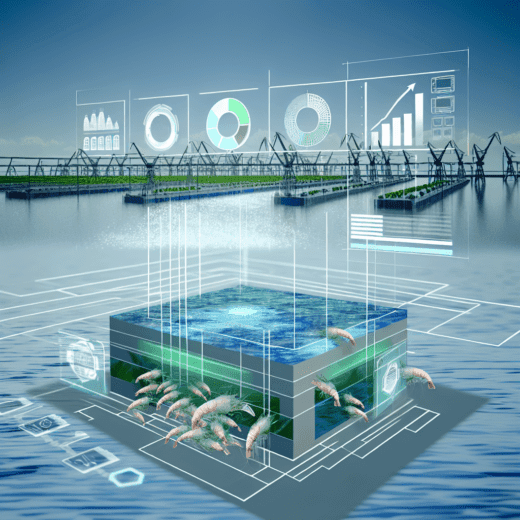Introduction to Sustainable Shrimp Farming
Sustainable shrimp farming represents a burgeoning frontier in aquaculture, offering a transformative opportunity for aspiring entrepreneurs to engage in an industry poised for both environmental responsibility and economic growth. Given the world’s increasing demand for protein coupled with mounting environmental concerns, eco-friendly shrimp farming not only addresses these market needs but also promises substantial innovation and market disruption. This in-depth exploration discusses strategies, challenges, and opportunities inherent in starting an eco-friendly shrimp farming business. By evaluating real-world cases and leveraging academic insights, we aim to equip entrepreneurs with the knowledge necessary to thrive in this dynamic marketplace.
Understanding the Need for Sustainable Shrimp Farming
Industrial shrimp farming has long been under scrutiny due to its detrimental environmental effects, including habitat destruction, water pollution, and biodiversity loss. As global awareness of sustainability grows, stakeholders—ranging from consumers to regulators—demand eco-friendlier practices. This trend provides a unique market opportunity for startups to innovate and capture a share of the lucrative aquaculture industry. By focusing on environmentally-sound farm practices, startups can align with broader sustainability goals while appealing to a conscious consumer base increasingly preferring products with minimal ecological impact.
Innovative Technologies in Shrimp Farming
Embracing cutting-edge technologies is pivotal for startups aspiring to succeed in sustainable shrimp farming. Innovations such as biofloc technology, recirculating aquaculture systems (RAS), and integrated multivariable aquaculture (IMVA) have shown considerable promise.
Biofloc technology introduces a microbial community to the farm environment, optimizing shrimp health by recycling nutrients and reducing water usage and waste production. Meanwhile, RAS minimizes water use by treating and reusing tanks’ water, a critical advantage in regions facing freshwater scarcity. IMVA combines shrimp with other species, like algae or shellfish, to establish a symbiotic ecosystem that enhances nutrient profiles and reduces waste outputs.
These technological innovations not only minimize environmental footprints but also enhance productivity, aligning with the dual objectives of sustainability and profitability in modern aquaculture.
Disrupting the Market: Opportunities and Challenges
The sustainable shrimp farming sector offers numerous opportunities for market disruption, from technological advancements to customer service innovations. However, these opportunities come with inherent challenges that entrepreneurs must navigate.
Opportunities:
-
Consumer Demand:
With an increasing demand for sustainable food sources, there lies a substantial opportunity to capture market share among health and eco-conscious consumers. Transparent labeling and certifications like Fair Trade or organic can further bolster consumer trust and loyalty. -
Policy Supports:
Government initiatives and subsidies aimed at promoting green technologies provide potential financial support to startups looking to innovate in this space. -
Global Networks:
Establishing international collaborations can foster technology transfer and shared techniques, enhancing operational efficiencies and expanding market reach.
Challenges:
-
High Initial Costs:
The transition from traditional to sustainable methods often involves considerable initial investment in technology and infrastructure. -
Regulatory Hurdles:
Navigating the complex web of regional, national, and international aquaculture regulations can be daunting. -
Market Penetration:
Breaking into established markets dominated by traditional players requires effective marketing strategies and standout value propositions.
Strategies for Success: Scaling and Achieving Market Fit
Creating a scalable and market-fit business model demands strategic planning and execution. Startups must focus on proving their concept at a manageable scale before expanding operations.
-
Lean Startup Methodology:
This approach advocates developing Minimal Viable Products (MVPs) to test hypotheses quickly and efficiently. Gathering real-time feedback allows for informed iterations and pivots based on consumer needs and preferences. -
Local Focus:
Initially targeting local and niche markets can provide invaluable insights and solidify brand presence, making subsequent scaling more manageable and less risky. -
Vertical and Horizontal Integration:
Entrepreneurs should explore possibilities for both vertical integration (controlling more supply chain aspects) and horizontal integration (expanding product lines) to enhance operational control and market presence.
Funding Your Eco-friendly Shrimp Farm
Raising capital is a central challenge for startups, and sustainable shrimp farming is no exception. Here are strategies that can help secure necessary investment:
-
Venture Capital:
Leveraging a convincing business plan highlighting the startup’s potential for market disruption and environmental impact can garner interest from venture capitalists specializing in green technologies. -
Crowdfunding:
Platforms like Kickstarter or GoFundMe enable direct engagement with potential customers and investors who believe in the vision of sustainable farming. -
Government Grants and Subsidies:
Entrepreneurs should identify and apply for available grants that promote sustainable aquaculture practices.
- Partnerships:
Collaborations with established players in aquaculture can bring in expertise and financial resources vital for launch and scale-up phases.
Real-world Case Studies
Examining successful startups provides valuable lessons and models to emulate.
-
AquaBounty Technologies:
Known for their genetically modified AquAdvantage salmon, AquaBounty balances innovative genetics with sustainability, reducing feed requirements and improving growth cycles, thus lowering environmental strains and production costs. -
New Wave Foods:
Focusing on plant-based shrimp alternatives, New Wave Foods serves as an example for diversification within shrimp farming, appealing to vegan and eco-conscious markets through innovation.
Each example illustrates unique approaches to merging entrepreneurial spirit with environmental stewardship, underscoring the diversity of strategies available.
Conclusion: The Path Forward in Sustainably Cultivating Shrimp
Starting an eco-friendly shrimp farming business requires a dedicated fusion of innovation, strategy, and persistence. While challenges exist, the rewards—both financial and environmental—prove compelling. By understanding the current market landscape, leveraging cutting-edge technology, and adopting strategic operational models, entrepreneurs can navigate the complexities of this industry and emerge as leaders in sustainable aquaculture.

